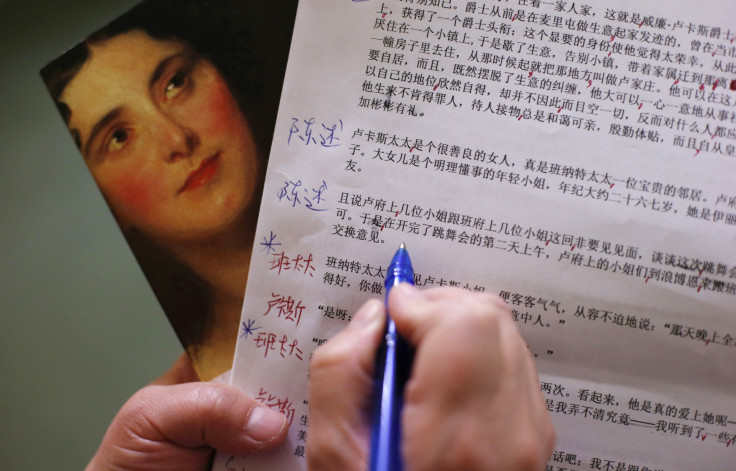About 30% Of China’s Population, Or 400 Million People, Cannot Communicate In Mandarin Chinese

About 30 percent of the Chinese population, or 400 million people, cannot speak Mandarin, the official language of China and the one most people know as the “Chinese” language, despite the government’s effort to promote the unified tongue since the founding of the People’s Republic of China in 1949. However, there has been some progress, as only 53 percent of the population could communicate in Mandarin in 2004.
Although the remainder of the 1.3 billion or so Chinese can communicate in Mandarin, many of them do not speak it well, and the country needs to invest in promoting Mandarin, the Chinese Ministry of Education said Thursday, according to Quartz.
China is home to 55 ethnic minority groups, each with its own language. Even the majority group, Han Chinese, who constitute 90 percent of the Chinese population, speak some 1,500 dialects based on history, geography and ancestry.
Some of these dialects are similar enough to Mandarin, which was the regional dialect of Beijing, but many are so different that they completely preclude nonspeakers from understanding. Even a non-Chinese speaker could probably tell that Cantonese, a dialect originating in the southern province of Guangdong, sounds vastly different from Mandarin.
Historically, what is considered China geographically today has frequently broken into warring kingdoms. Some argue that maintaining a group’s dialect is important to upholding its cultural traditions, but Chinese leaders at the national level have seen a common tongue, or “linguistic unity,” as a way to establish a stable and unified China.
The government passed a law in 2000 requiring that Mandarin be the official language in all major media outlets, and officials have recently began to push a language campaign in the countryside. One former official of the Ministry of Education went as far as proposing Mandarin classes in place of English classes in primary schools.
While progress has been made, China has acknowledged it may never bring Mandarin competency to the entire country. Setting aside the amount of resources that would be required to educate all Chinese citizens in the language, some ethnic groups have resisted the government’s effort to promote Mandarin in place of their dialects. In 2010, thousands of Tibetan students protested against a proposal to limit the use of the Tibetan language in schools, Quartz reported.
Watching a Mandarin speaker and a Cantonese speaker name the same objects and pronounce the same phrases is very entertaining, as shown below:
© Copyright IBTimes 2025. All rights reserved.





















